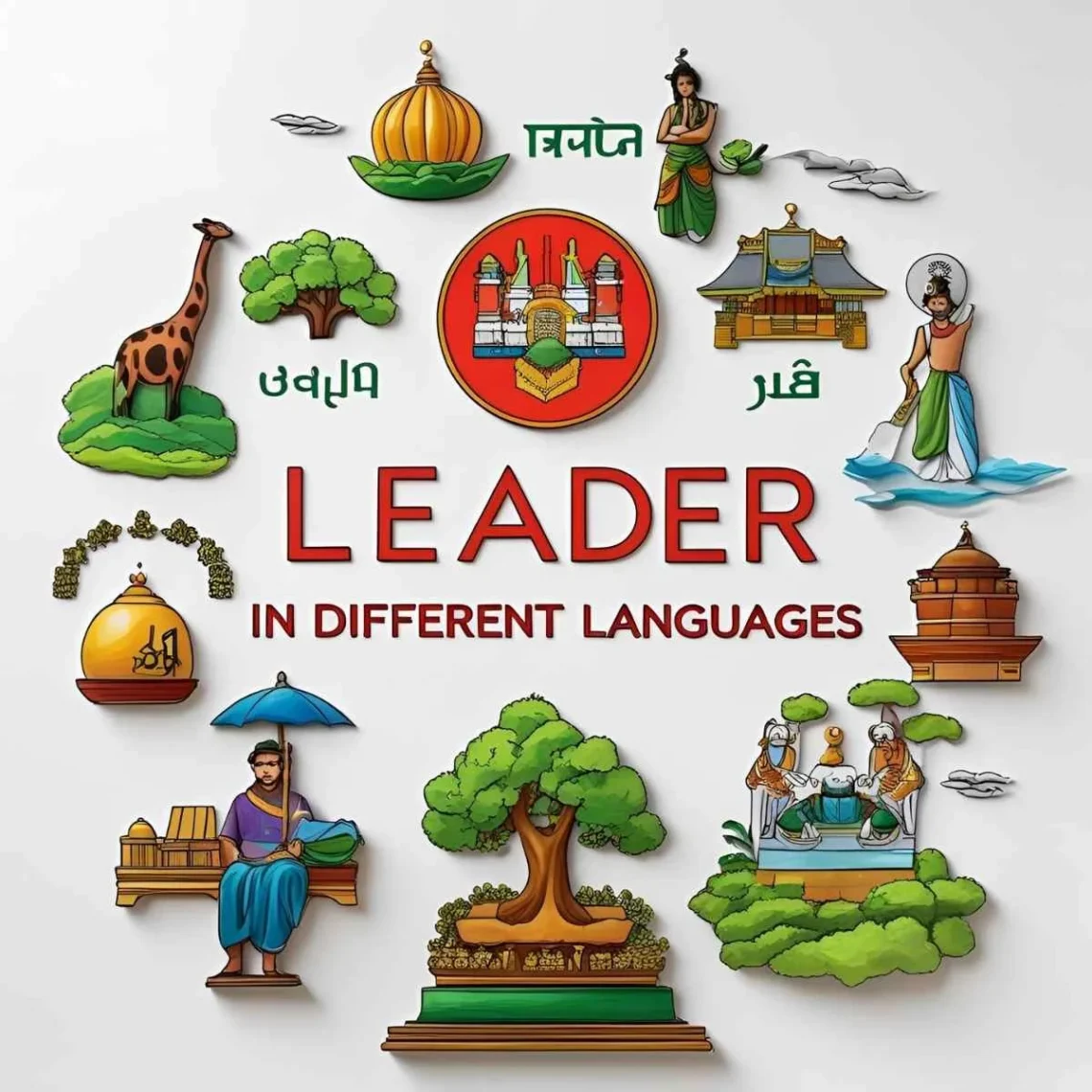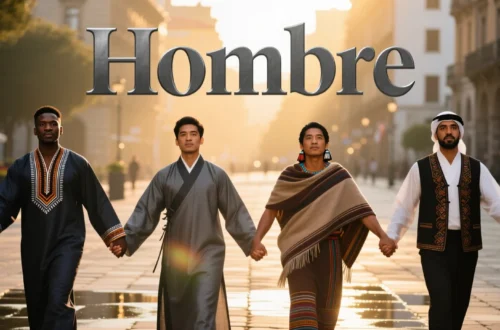Picture a young woman in a Nairobi community center, rallying her peers with the Swahili word “kiongozi,” her voice brimming with purpose. The term “leader” resonates worldwide, embodying vision, courage, and responsibility.
Whether it’s “jefe” in a bustling Mexico City office or “neta” in a vibrant Tel Aviv market, the word for “leader” reflects a universal call to inspire, shaped by each culture’s unique perspective.
Let’s embark on a global journey to explore how people express “leader” in different languages and what these terms reveal about their societies.
Reference Table: “Leader” in Different Languages
| Language | Word/Phrase | Cultural/Linguistic Insight |
|---|---|---|
| French | Leader/Chef | “Leader” is borrowed from English; “chef” implies authority. |
| Spanish | Jefe | Means “chief” or “boss,” common in workplace settings. |
| Italian | Capo | Suggests “head” or “chief,” used in formal and informal contexts. |
| German | Führer/Leiter | “Leiter” is common for “leader”; “Führer” is avoided due to history. |
| Mandarin | Lǐngdǎo (领导) | Means “to guide,” emphasizing direction and authority. |
| Hindi | Neta | Refers to a political or community leader, tied to influence. |
| Japanese | Rīdā (リーダー) | Borrowed from English, used in modern and youth contexts. |
| Korean | Jidoja (지도자) | Means “guide,” reflecting leadership as mentorship. |
| Arabic | Qā’id (قائد) | Means “commander,” used in over 20 countries for authority. |
| Swahili | Kiongozi | Means “guide” or “director,” widely used in East Africa. |
| Zulu | Umholi | Implies a trailblazer, used in South African communities. |
| Yoruba | Olórí | Means “head” or “chief,” tied to traditional leadership. |
| Maori | Rangatira | Denotes a chief or noble, rooted in communal respect. |
| Hawaiian | Alakaʻi | Means “guide,” tied to the spirit of aloha and mentorship. |
| Cherokee | Digatiski | Refers to a respected leader, often in tribal contexts. |
European Languages: Leadership with Authority and Nuance
European languages express “leader” with terms that balance authority and cultural values. For instance, in French, “chef” (chief) is used in formal settings like businesses, while “leader” is borrowed for modern contexts, reflecting France’s blend of tradition and global influence. Meanwhile, Spanish uses “jefe” (chief), a term common in Spain and Latin America, evoking workplace authority with a warm, approachable tone. Additionally, Italian employs “capo” (head), versatile for both corporate bosses and community figures, aligning with Italy’s emphasis on personal charisma. In German, “Leiter” (conductor) is preferred for its neutral tone, as “Führer” carries historical weight, showing Germany’s sensitivity to language. Thus, these terms reflect Europe’s mix of hierarchical respect and modern adaptability.
Asian Languages: Guidance Through Harmony
Asia’s linguistic diversity shapes unique expressions for “leader,” often tied to guidance and harmony. For example, in Mandarin, “lǐngdǎo” (to guide) emphasizes direction, used in China for both political and corporate leaders. In Hindi, “neta” refers to influential figures, often political, resonating with India’s vibrant democratic culture. Similarly, Japanese uses “rīdā,” borrowed from English, popular among youth and in business, reflecting Japan’s globalized modernity. In Korean, “jidoja” (guide) highlights leadership as mentorship, aligning with South Korea’s focus on collective progress. Finally, Arabic’s “qā’id” (commander), used across over 20 countries like Egypt and Saudi Arabia, conveys authority with a nod to military and cultural traditions. These terms showcase Asia’s range, from authoritative to collaborative leadership styles.
African Languages: Leadership in Community
African languages tie “leader” to community and responsibility. For instance, Swahili, spoken in over 20 countries like Kenya and Tanzania, uses “kiongozi” (guide), a term that signals direction in communal settings like village meetings. In Zulu, “umholi” (trailblazer) is used in South Africa, evoking a visionary who paves the way for others. Similarly, Yoruba’s “olórí” (head) in Nigeria reflects traditional roles, often tied to chiefs or elders. These terms, used across diverse African contexts, emphasize leadership as a collective duty, celebrated in gatherings and ceremonies.
Indigenous & Island Languages: Leadership as Stewardship
Indigenous and island languages express “leader” with a focus on stewardship and respect. For example, Maori in New Zealand uses “rangatira,” denoting a chief or noble, reflecting the culture’s emphasis on communal respect. In Hawaiian, “alakaʻi” (guide) carries the spirit of aloha, used for mentors who lead with care. Similarly, Cherokee’s “digatiski” signifies a respected tribal leader, rooted in community trust. In Samoan, “matai” refers to a titled chief, central to Pacific governance systems. Across these cultures, from New Zealand to the Cherokee Nation, “leader” emphasizes guidance and responsibility, often tied to traditional roles.
Cultural Insights: The Evolution of Leadership
Words for “leader” have evolved with societal shifts. For instance, the English “leader” derives from Old English “lǣdan” (to guide), spreading globally through cultural exchange. In Arabic, “qā’id” traces back to military commanders in Islamic history, shaping its modern use. Moreover, in African languages like Swahili, “kiongozi” reflects precolonial governance systems, emphasizing community guidance. In Asia, terms like “lǐngdǎo” align with Confucian values of order and mentorship. These words carry histories of governance, from European feudal systems to Pacific chiefly traditions, uniting people through shared ideals of leadership.
Proverbs and Sayings: Wisdom of Leadership
- French: “Un bon chef guide sans forcer.” (A good leader guides without forcing.) – Emphasizes gentle authority.
- Hindi: “Neta woh hai jo dil jeete.” (A leader wins hearts.) – Highlights inspirational leadership.
- Swahili: “Kiongozi ni kama mwangaza, anaonyesha njia.” (A leader is like light, showing the way.) – Ties leadership to guidance.
- Japanese: “Rīdā wa michi o hiraku.” (A leader opens the path.) – Reflects visionary leadership.
- Yoruba: “Olórí n jọba pẹlu ìfẹ́.” (A leader rules with love.) – Links leadership to compassion.
FAQs
Why do some words for “leader” sound similar?
Globalization has spread terms like “leader” (English) to languages like Japanese, while shared roots (e.g., Arabic’s “qā’id” in Swahili) create similarities.
What’s the oldest term for “leader”?
English “leader,” from Old English “lǣdan” (circa 8th century), is among the earliest, evolving through cultural exchange.
How do cultures shape the term’s use?
Collectivist cultures (e.g., African, Indigenous) view leaders as community guides, while individualistic cultures (e.g., European) emphasize personal authority.
Conclusion
From “jefe” in Mexico to “kiongozi” in Tanzania, the word for “leader” weaves a global thread of guidance and inspiration. Each term, whether the commanding “qā’id” in Arabic or the nurturing “alakaʻi” in Hawaiian, reflects cultural values while celebrating our shared need for direction. Consequently, these words remind us that leadership unites all people in a universal call to inspire. How do you say “leader” in your language, and what does it mean to you? Share your stories below—we’re eager to hear your voice!






